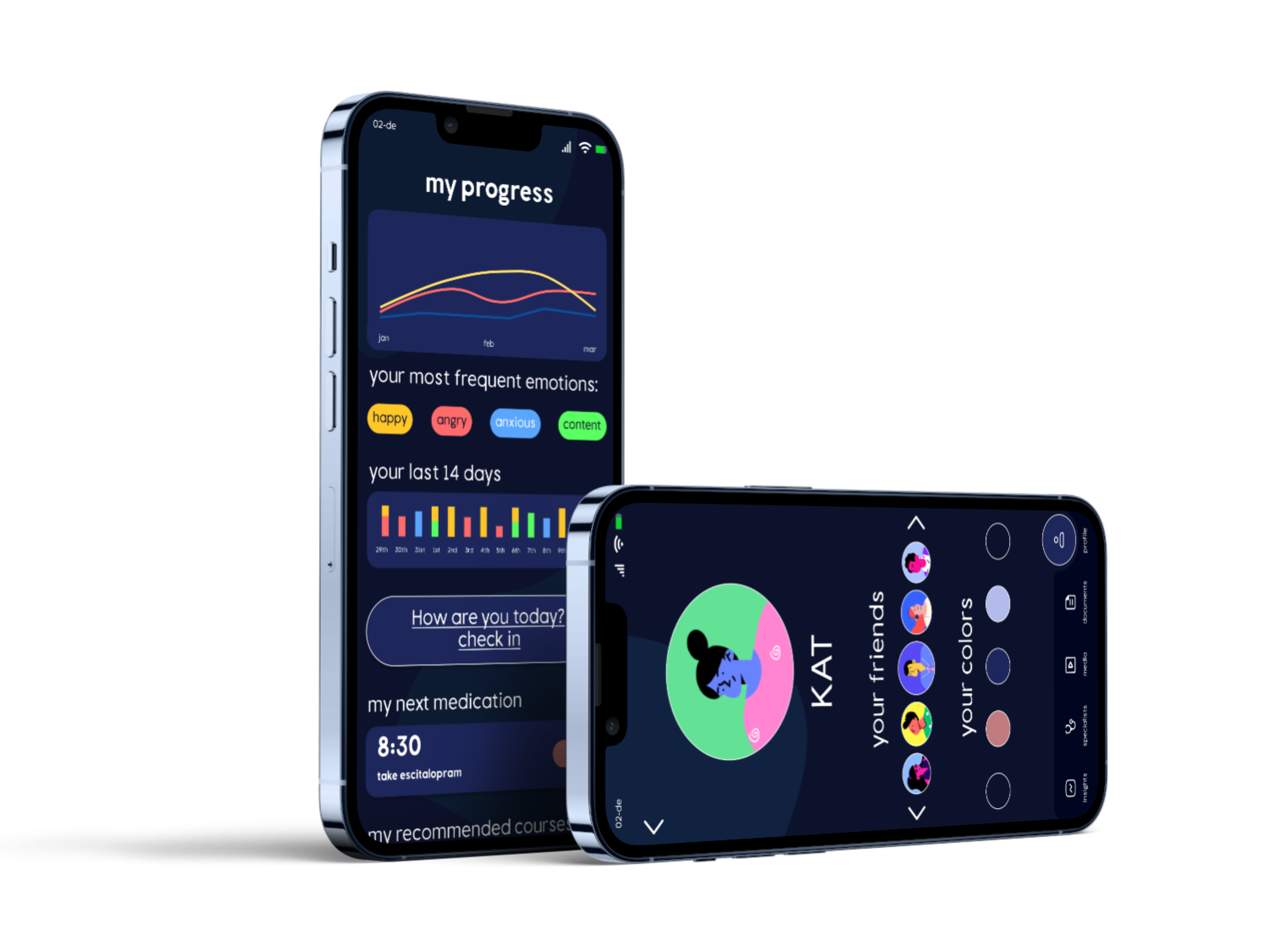
about MindMeadow
The goal of the MindMeadow project is to empower individuals with accessible online therapy and a wealth of resources concerning both mental and physical health. MindMeadow sought to bridge the gap between users and mental health support, recognising the importance of holistic well-being.
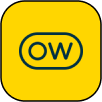


UX researcher
UX designer
UI designer
17 weeks

Individuals facing mental health challenges often struggle to find accessible, personalised, and consistent support tools that integrate seamlessly into their daily lives. They need a user-friendly mental health app that offers evidence-based resources, promotes self-awareness, tracks emotional well-being, and connects them with professional guidance, because that enables them to better manage their mental health.
By creating a user- friendly and responsive health and wellbeing portal that addresses the challenges of modern life by empowering people to manage their health information effectively and offering a diverse range of physical and mental wellness resources, we believe to attract new users.
With a clear problem statement, I started looking into competitors and created a swot profile and a UX analysis
.png)
.png)
onboarding process
guiding people through the sign-up process and the main features
signup / login
lets users access their information
menu
lets users access and edit their settings
dashboard
lets users see an overview of their favourite features
mood tracker
let's users track their progress
medication tracker/reminder
lets users set reminders for any medications they take
data storage
lets users upload diagnosis, doctors notes,prescriptions
educational feature
lets users access educational content
appointments
lets users book appointments with mental health care professionals
The target audience is individuals over 18 who want to improve their mental health.
Since depression is common among all images and rates rise with age, the app should be easy to use and cater to all age groups.
- Apps like Cotolib and MndDoc and Calm
- websites like psychologytoday.com
The app has the potential for great success due to its unique features, such as a medication tracker and a collaborative platform for Psychiatrists, Psychologists, an GPs, which distinguishes it from other mental health apps. However, a significant challenge is ensuring its visibility amidst the intense competition in the market
The key to the success of this app is the right marketing to get ahead of the competition. It is also crucial to make the app attractive to health care professionals and possibly be funded by the main insurance. We believe that can be accomplished with a user-centered design and a high level of security.
Research
I decided to kick-off the observation phase with a quick survey. I used google forms and collected data from 8 participants
75% abandoned apps due to lack of motivation
87,5% would like to incorporate mindfulness into their lives
50% have used mental health apps before
What type of recourse or content related to mental well-being do you find most helpful?

How important is the option to connect to a therapist/psychiatrist to you?
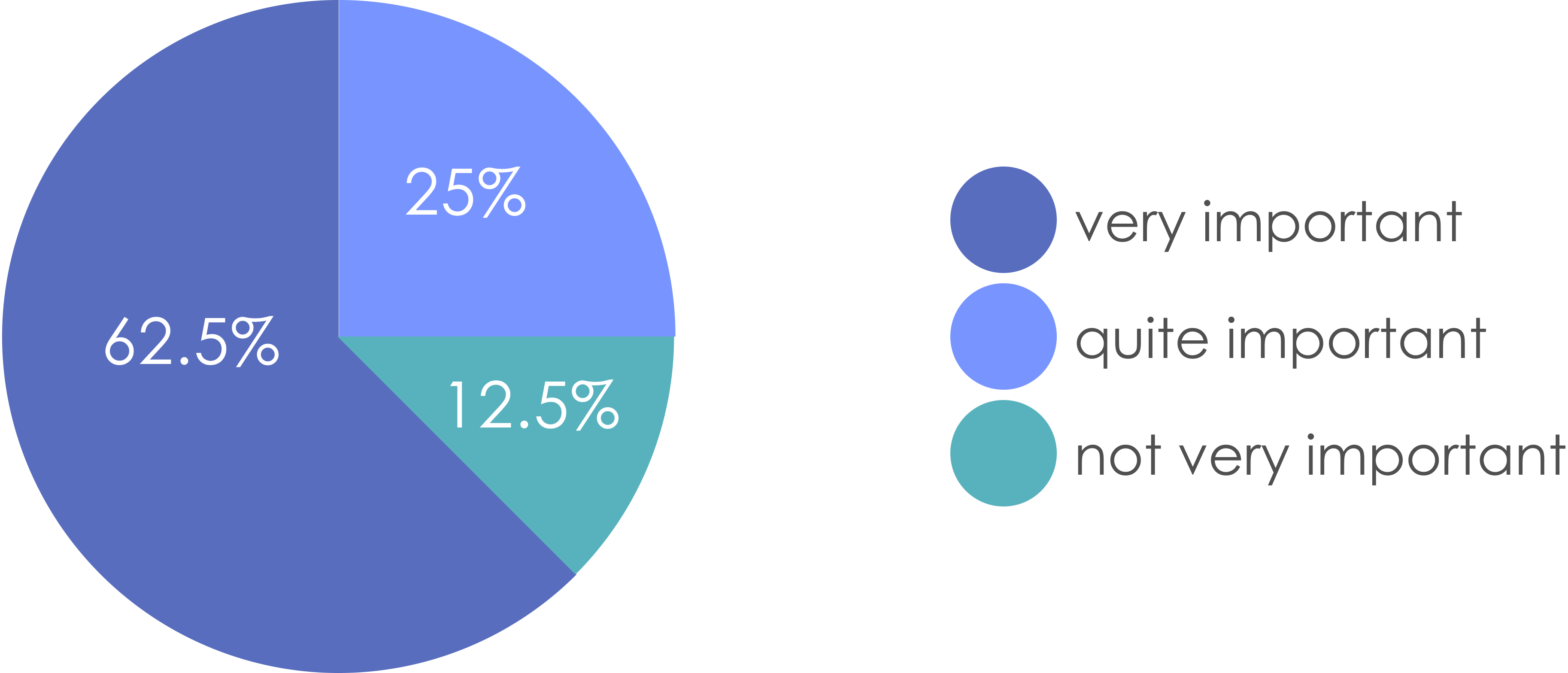
Research
With these insights in mind, I identified participants for user interviews. To better understand the needs, goals and frustrations of potential users I interviewed 4 people in 40 min sessions. Here are the results:
- explore and identify the specific mental health needs of users, including their preferences for support, features, and content within the app.
- understand users frustrations
- understand users goals and motivations
- understand users goals and motivationsidentify users mental well-being needs
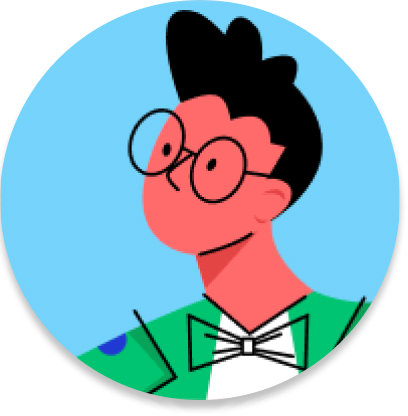
39
Germany
engineer

30
Germany
marketingmanager

30
Italy
student

36
Germany
finance
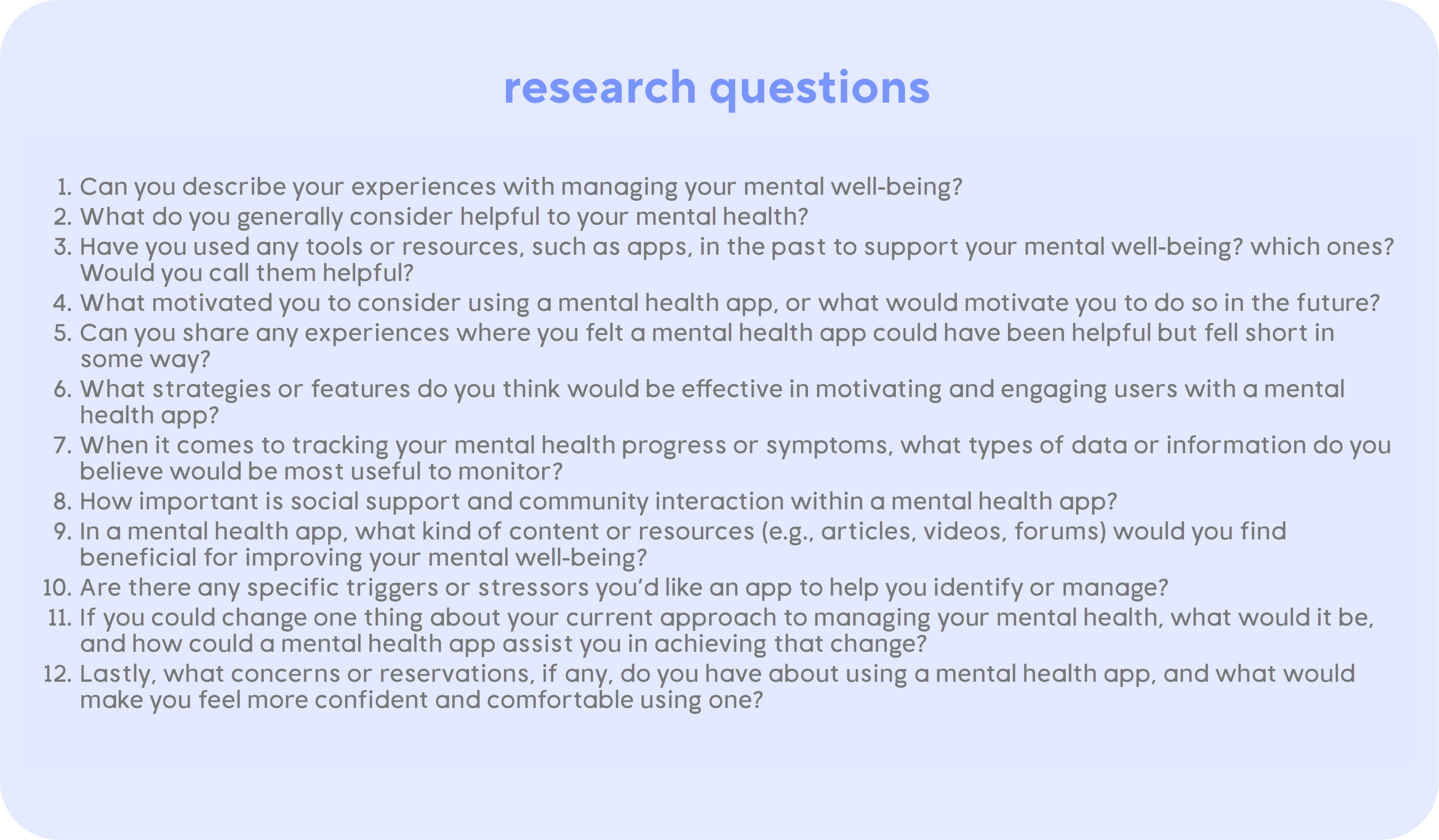
With the results of the user interviews, I created an affinity map:

Gamification elements, progress tracking, and personalisation features are highly desired to keep users motivated and engaged with mental health apps.
Exercise, such as running and yoga, is considered highly beneficial for clearing the mind and improving mental health by multiple users.
Users emphasise the importance of talking to close friends and family members as a valuable source of emotional support.
I decided to kick-off the observation phase with a quick survey. I used google forms and collected data from 8 participants
Sign up / log in
- As a user, I want to be able to access my information safely and quickly, so that I can edit and review it.
- As a user I want to sign up using my social media account, so that I don't have to remember more passwords.
dashboard
- As a user I want my dashboard to show my progress so that i can see where I`m at.
mood tracker
- As a user I want to be able to track the progress of my mental health.As a user I want a safety net that tells me about possible options when in crisis.As a user I want to set myself goals, short-term and longterm to see my progress and achievements.
appointments
- As a user i want to be able to find a mental healthcare professional close to me, so I can book an appointment and don't have to travel far.As a user, I want to be reminded oof my appointments, so that I don't miss one.
medication tracker / reminder
- As a user i want to be reminded to take my medication so I don't accidentally miss a dose.
data storage
- As a user I want to get my prescriptions on my phone so that I can order them online.
educational feature
- As a user I want my educational content to be categorised, so that I can find the content I want to see easily.
video calls
- As a user, I want to be able to schedule video calls with my healthcare professional, so I don't have to commute for every appointment.
Based on my User research, I identified 2 personas: Max and Kat, who hav e different goals and motivation and are the foundation for all further steps.

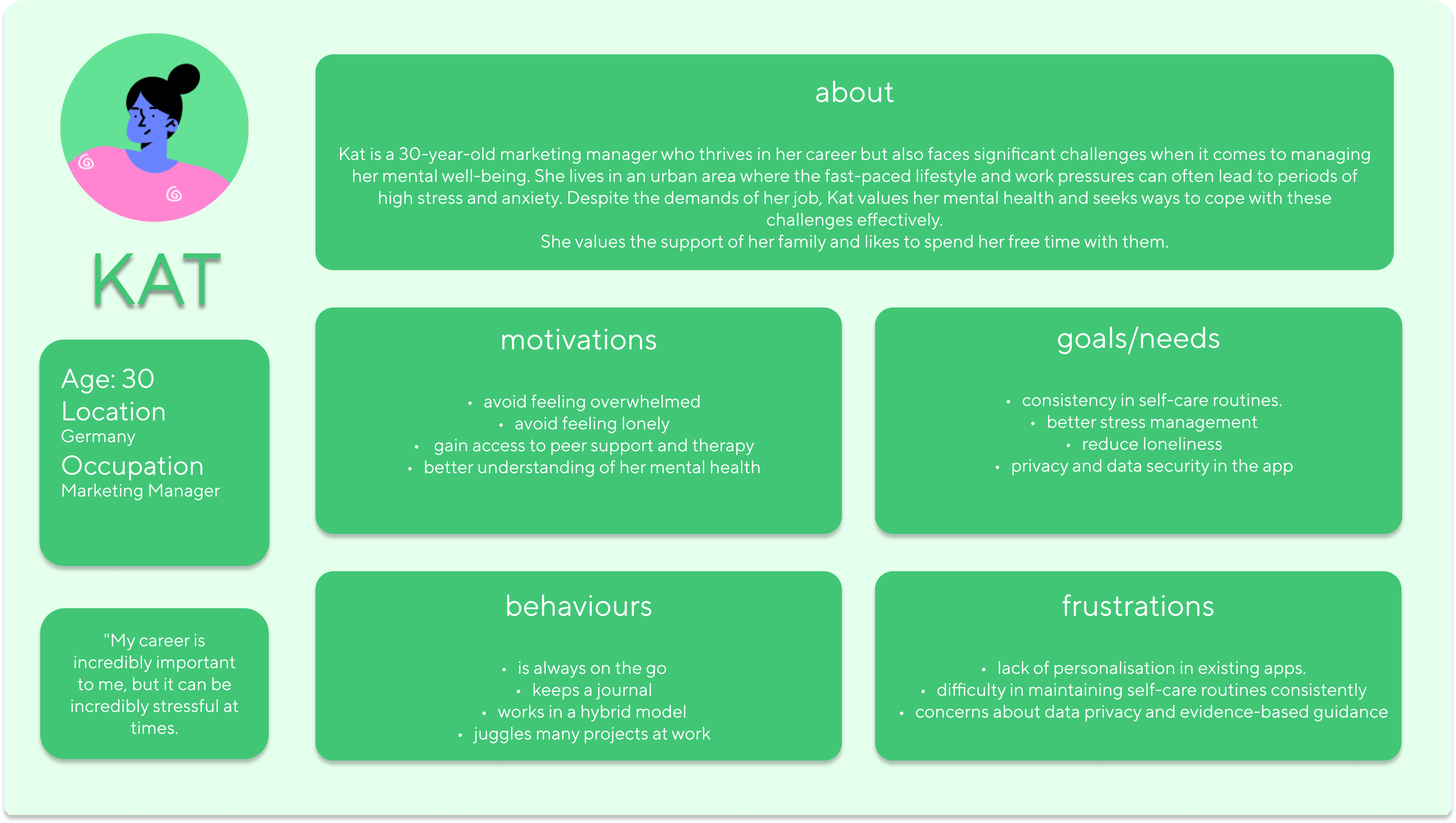

Lorem ipsum dolor sit amet, consectetur adipiscing elit. Suspendisse varius enim in eros elementum tristique. Duis cursus, mi quis viverra ornare, eros dolor interdum nulla, ut commodo diam libero vitae erat. Aenean faucibus nibh et justo cursus id rutrum lorem imperdiet. Nunc ut sem vitae risus tristique posuere.
Based on Max, Kat and the user journeys I created, I was able to map out user flows for the main features.
To determine the hirarchy for the sitemap, I conducted a card sorting session. The results helped me to refine the overall information architecture
.png)
%201.png)
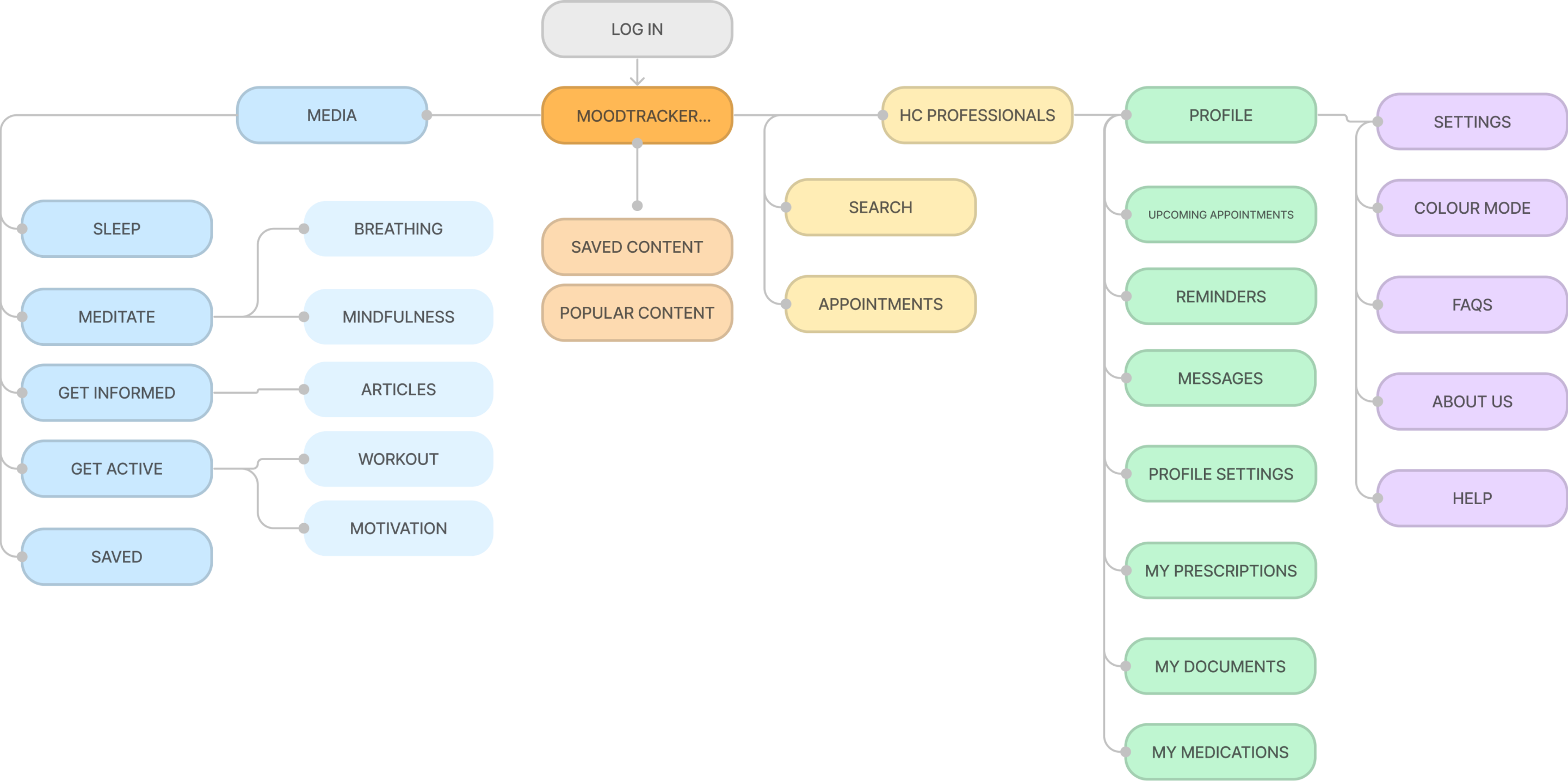

Lorem ipsum dolor sit amet, consectetur adipiscing elit. Suspendisse varius enim in eros elementum tristique. Duis cursus, mi quis viverra ornare, eros dolor interdum nulla, ut commodo diam libero vitae erat. Aenean faucibus nibh et justo cursus id rutrum lorem imperdiet. Nunc ut sem vitae risus tristique posuere.
With the sitemap and user flows in hand,I started designing low- and mid- fidelity wireframes
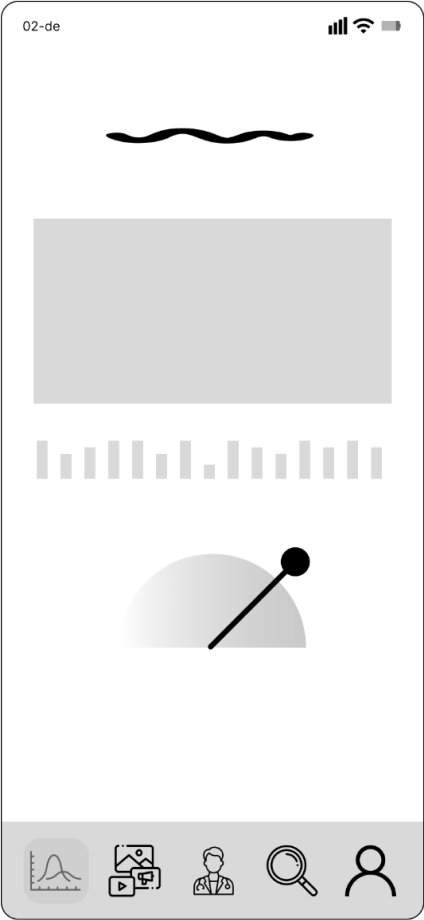
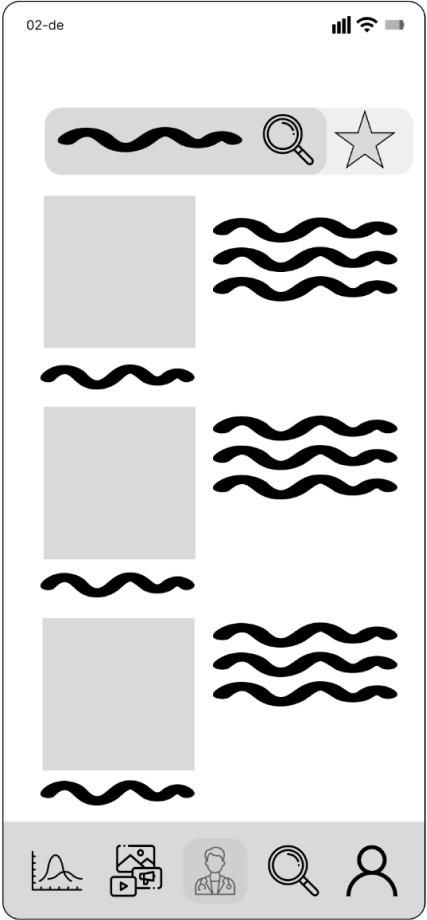
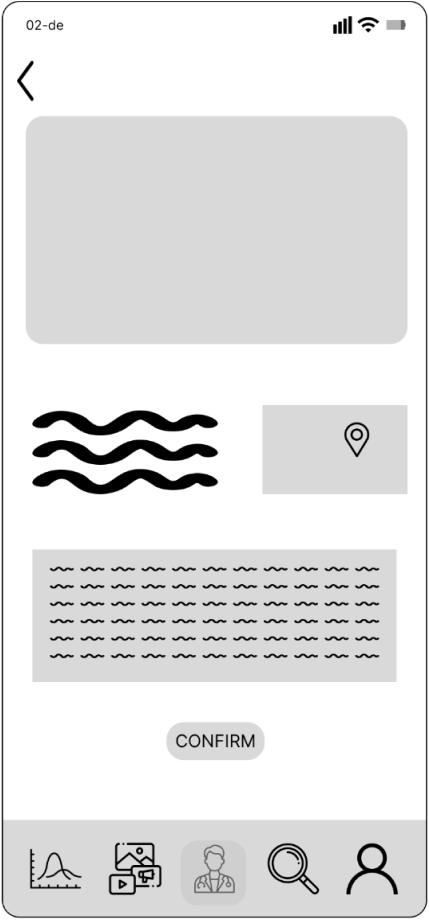
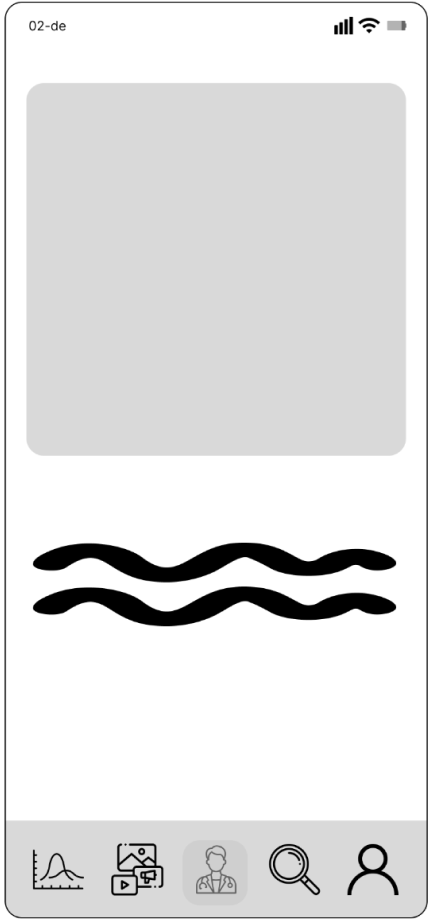
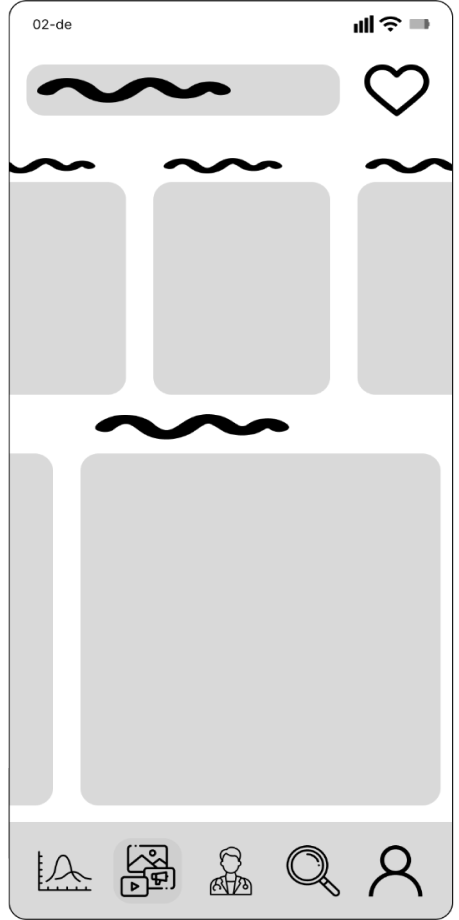



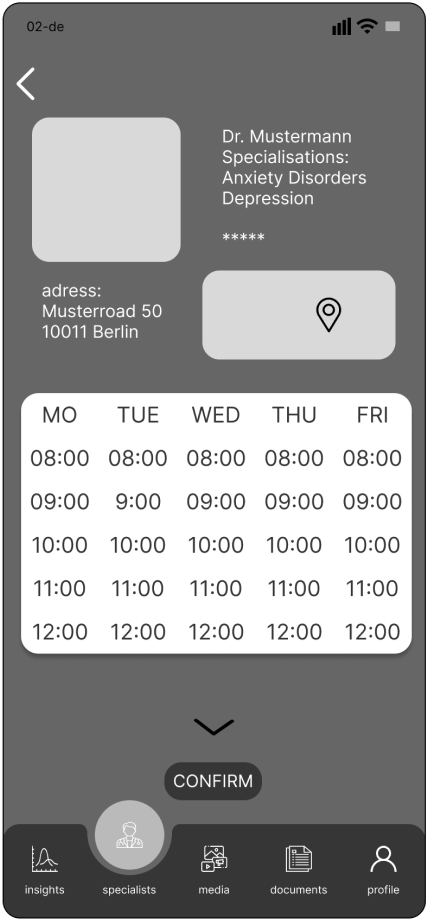

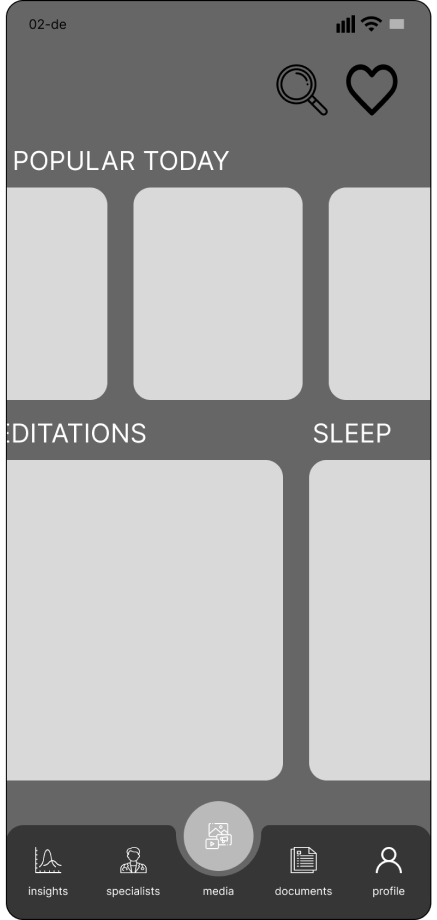

In the next step, I tested my iteration with 6 participants. I categorized the results into positive & negative comments and usability issues. I sorted these in a rainbow spreadsheet and rated them with an adapted Norman Nielsen scale.
The goal of this study is to determine the overall usability and learnability of the App MindMeadow. We want to detect pain points and points of friction in the navigation, sign up process and onboarding and determine how the participants rate the value and usability of the app .
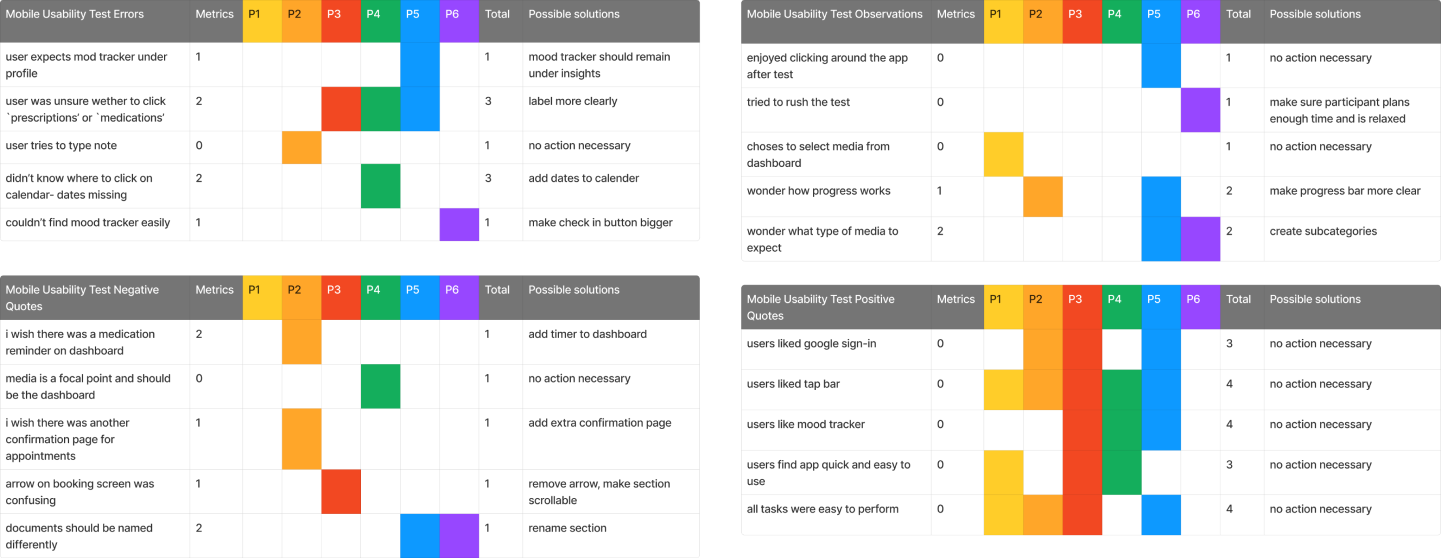
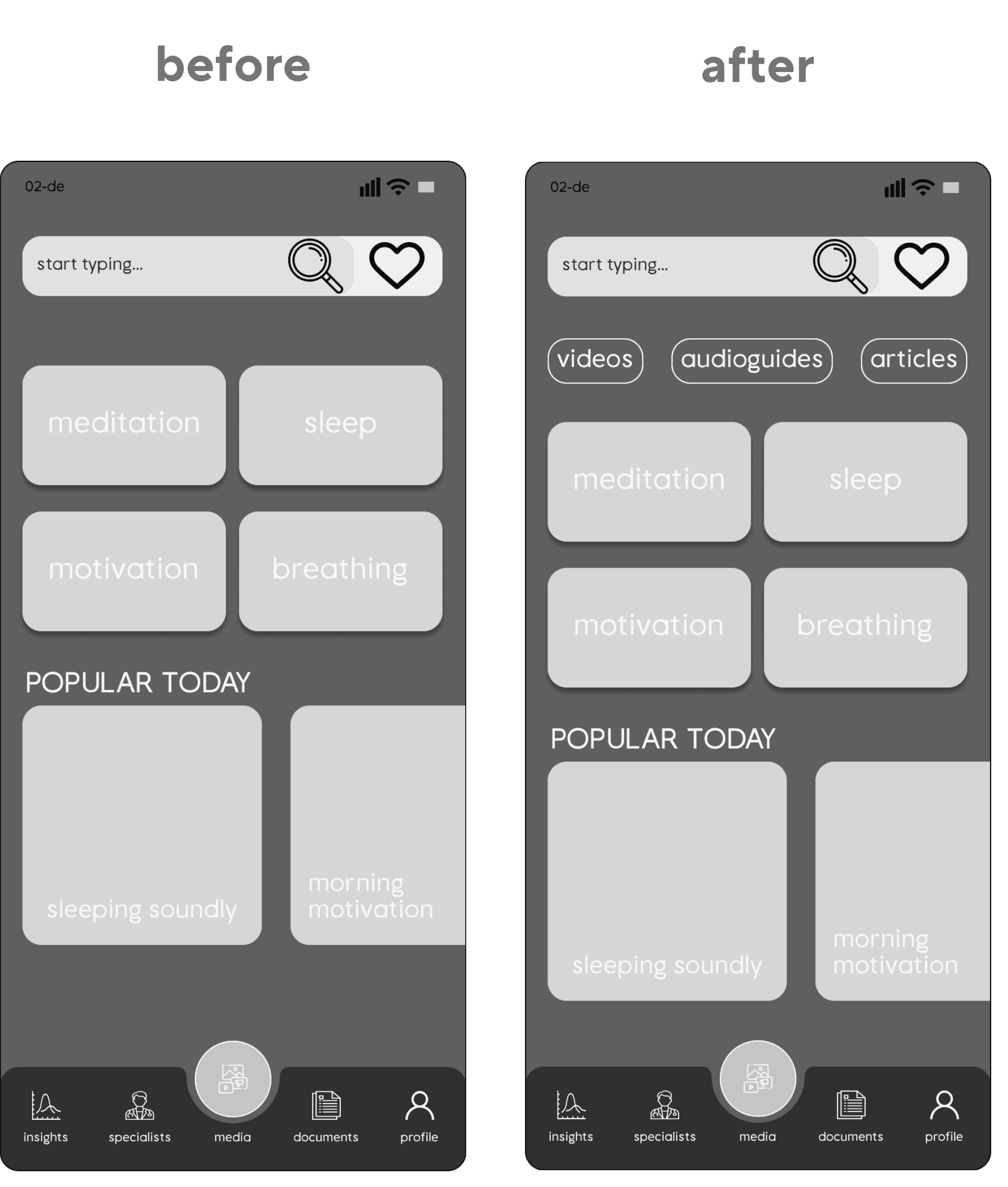
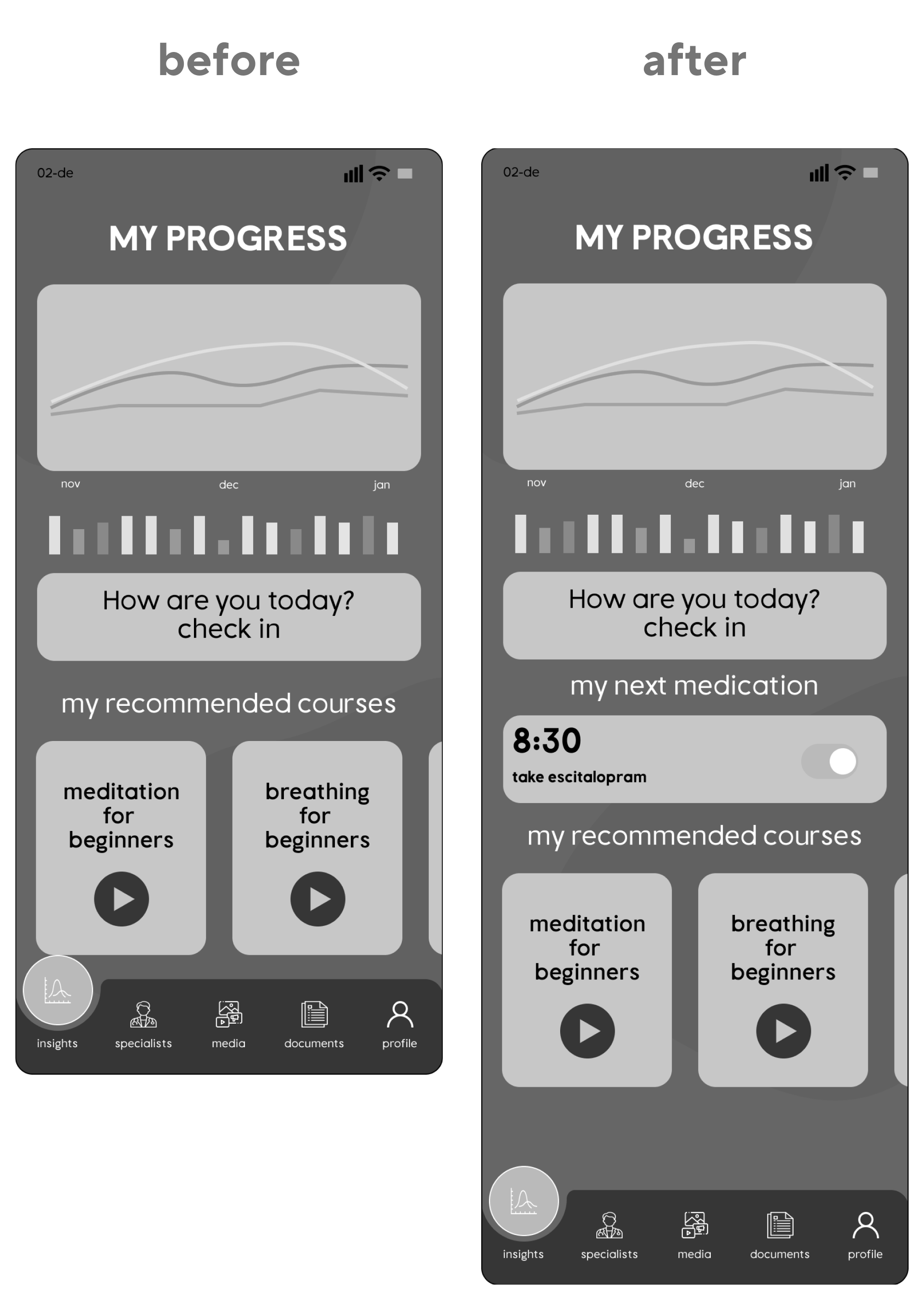
After fixing usability issues found usability testing, I started thinking about the final design and created a style guide for the UI
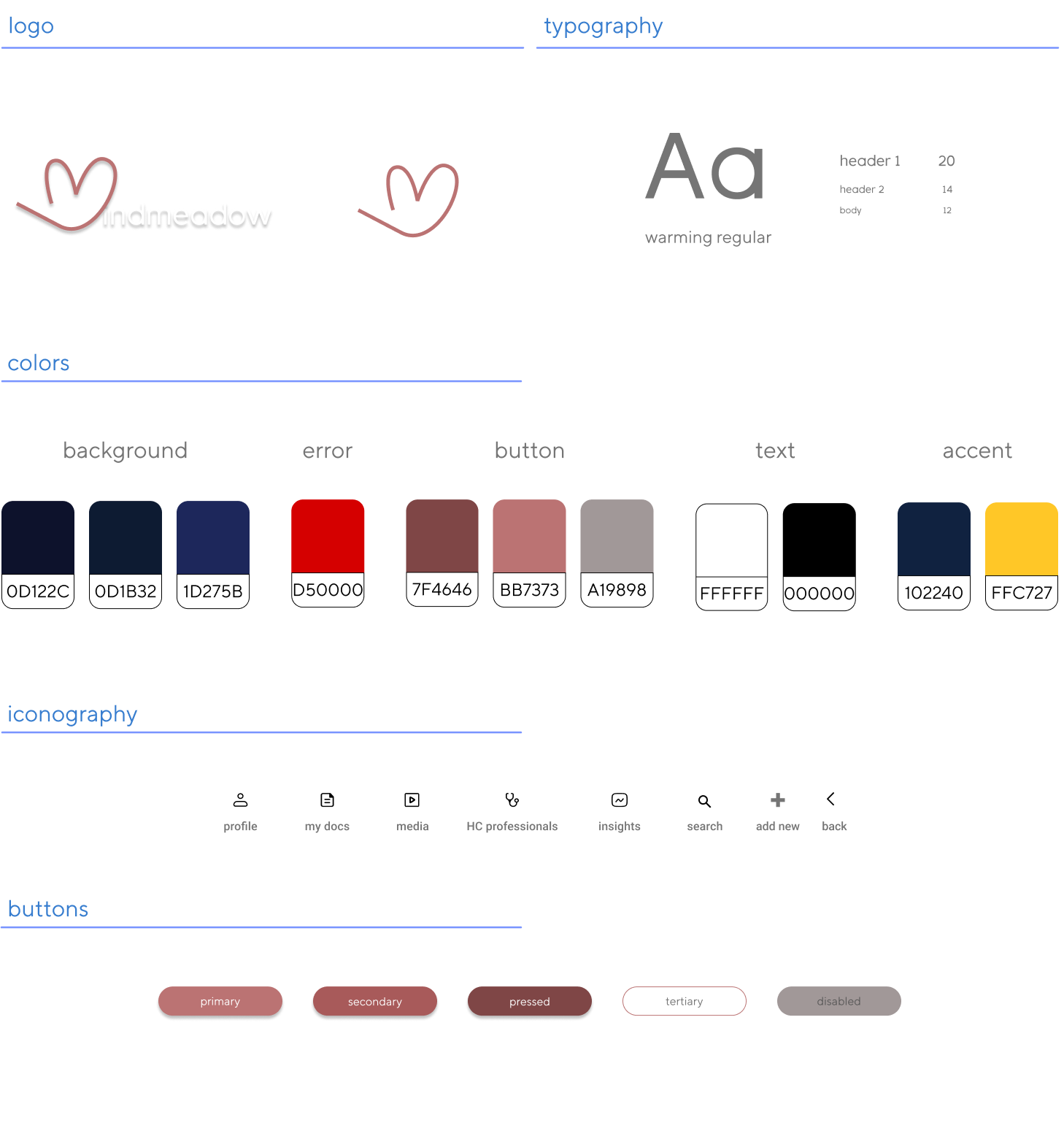
.png)
Several compelling ideas emerged during user testing that could enhance future iterations of the app. Users expressed an interest in being able to message and video call therapists through the application.
Although initially discarded to keep MindMeadow free and accessible to everyone, a potential solution involves limiting these features behind a paywall while keeping all other functionalities free. This approach aims to boost engagement among existing users and attract new users by offering increased accessibility to mental health providers. The viability of this hypothesis will be tested and validated through usability testing.
To achieve this, a proper user flow and prototype will be developed and tested with potential users. Feedback will be collected, compiled, and analysed to assess effectiveness and user satisfaction.
My UX design project MindMeadow has been an enlightening journey, marked by invaluable lessons and skill development. Throughout this project, I gained a profound understanding of the user-centric design process and the significance of empathy in crafting meaningful user experiences. Collaborating with other students, I developed my communication skills and learned to seamlessly integrate feedback into iterative design cycles.
MindMeadow's emphasis on user research deepened my appreciation for the importance of data-driven decision-making, as I delved into user personas and behavioral insights to inform my design choices.
The iterative nature of the project also taught me the importance of adaptability and flexibility in responding to evolving requirements and user needs. Additionally, this design challenge allowed me to refine my problem-solving skills and enhanced my ability to create intuitive and visually appealing interfaces.
MindMeadow provided not just a project, but a transformative learning experience that has equipped me with a solid foundation for future UX endeavours.


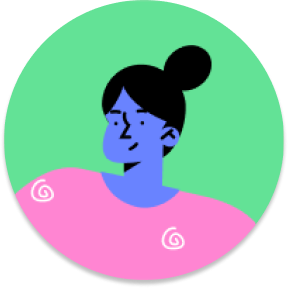

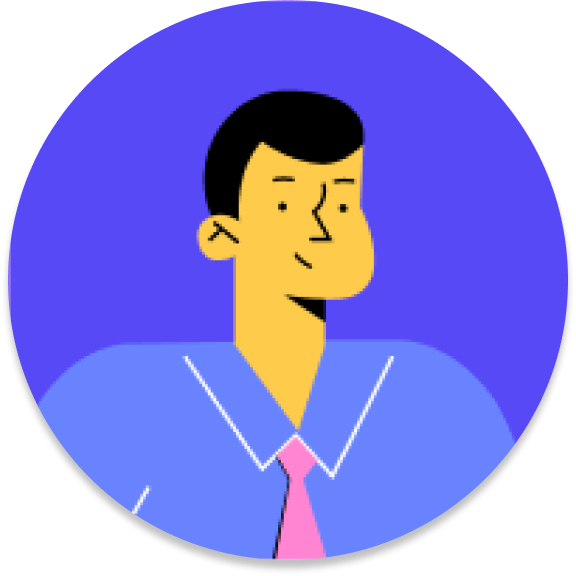
.png)
